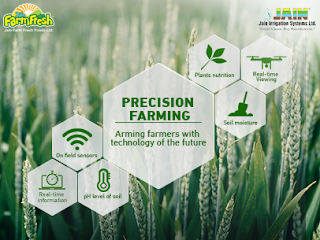Banana is yellow, curvy fruit which is not only delicious to eat but is loaded with vital nutrients. It’s a fruit that loves to smile at you whether you eat it or not. Archaeological evidence suggests that banana cultivation is as old as 5000 BCE (before common era).
India produces around 14 million metric tonnes of banana annually and ranks first in banana production in the world. Main areas of banana cultivation in India are – Andhra Pradesh, Tamil Nadu, Maharashtra, Karnataka, Gujarat and Assam.
Varities of Banana:
In India, banana is grown under varied conditions and production systems. Roughly, there are 20 varieties of banana that is available – Grandnaine being the most popular because of its tolerance to biotic stresses and good quality bunches. Its fruit has an attractive yellow colour with better quality and shelf life.
Ideal Conditions for Banana Cultivation
Banana is a tropical fruit that can grow very well in alluvial and volcanic soil. Since India has a tropical climate most of the year, banana cultivation can be done almost all year round.
Agro-climatic conditions for Banana Plantation
Banana grows at an altitude of approximately 2000 meters from sea level in climate ranging from humid to dry. 18⁰C- 35⁰C with a relative humidity of 75-80 per cent is the most favourable temperature range for a banana plantation. The growth and yield are reduced below 18⁰C and above 35⁰C. Average rainfall of 1700 mm distributed throughout the year favours good growth and satisfactory yield of this crop. At higher altitudes, only a few varieties such as ‘Hill Banana’ is preferred for cultivation.
Soil and Season for Banana Cultivation
The most suitable soil for banana cultivation is one that is neither too acidic nor alkaline. It should have high nitrogen content, adequate phosphorous level and should be rich in organic material with plenty of potash.
Tissue culture banana varieties can be planted any time of the year, provided the temperature conditions are moderate. This method offers a rapid multiplication of uniform quality, pest and disease-free production of banana in large quantities.
The Yield of Banana:
The planted crop usually gets ready for harvest within 11-12 months of planting. First ratoon crop gets ready by 8-10 months from harvesting the main crop and second ratoon crop takes around 8-9 months after the second crop. So, over 28-30 months, it is possible to harvest three crops of banana.
To sum it all, banana, after mango, is the second most important fruit crop in India. Its year-round availability, affordability, nutritive and therapeutic value makes it one of the favourite fruit among all classes of people.
For More Info: https://www.jainfarmfresh.com
Author: Riddhima















